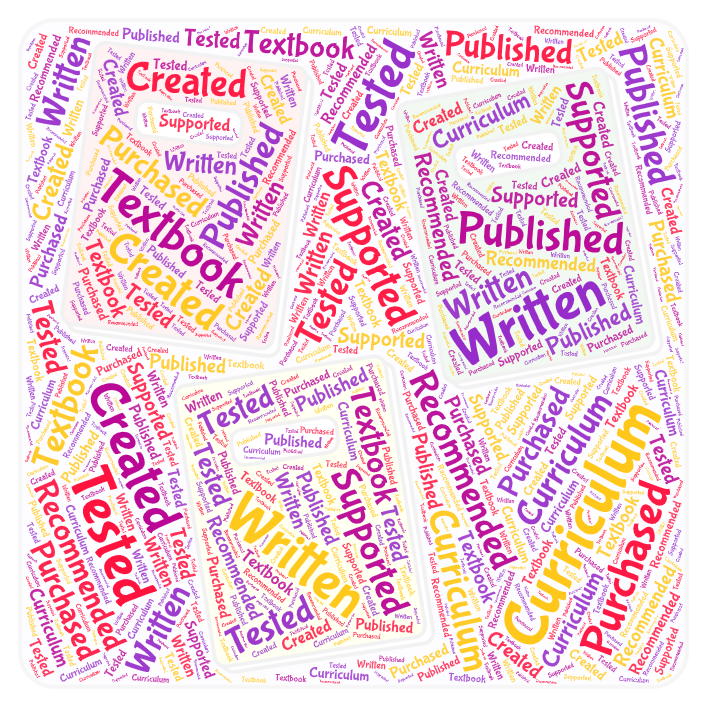If the number one question I get asked as an EL/ML teacher is, “Do you speak Spanish?” [answer: no, how would that help my Arabic-speaking students], the other question is, “Do you have an ELD curriculum?” That answer is not as pat.
Some Reasons for No ELD Curriculum
At no time during my 22 years teaching ELD have I had a curriculum. There are many explanations for this. The most terrible reason is money. The schools/districts that I taught at did not have the budget set aside enough to purchase a supported curriculum specifically for ELD. That is of course no excuse– and is against the law–but that is for another post. In some cases*, a school might have a low incidence of ELs/MLs. This means that the percentage or actual number of ELs/MLs at their school is very low. I am currently working in schools with a total of 6 students who are current ELs. In that case, purchasing an entire curriculum for 6 students does not make financial sense. Although schools are supposed to use their general budget to buy materials for ELD, they don’t always do this. Title III is available, but are restricted to being supplemental. Those federal funds cannot be used to purchase the entire curriculum.
A Textbook is NOT a Curriculum
All of that being said, those are not the reasons I have never had a purchased curriculum. First, I want you all to know a hard truth. A textbook is not a curriculum. I’m going to repeat that: a textbook is not a curriculum. I have certifications in multiple subjects including Curriculum and Instruction Supervisor K-12, and my professors drilled this axiom into us. Why is this the case? Textbooks support a written curriculum, and many times can be aligned to it, but textbooks are not the entirety of what you should teach.
Types of Curricula
There are many types of curricula (including tested curricula), but I will summarize the main three types.
1. Recommended Curriculum- this the framework that experts in the field suggest to schools and districts as the basis for their written curriculum. I have found these go hand-in-hand with the standards set forth by the organizations of each subject. NCTM and NGSS each have frameworks for math and science, respectively, for which curricula can be derived.
2. Written Curriculum- this is a specific, interactive document that ensures academic goals are being accomplished. It is aligned and articulated, meaning the curriculum must ensure that skills are covered across disciplines and through the grade levels. There should not be gaps in the skills, topics, standards, and learning outcomes. A written curriculum represents a healthy compromise between what educators think should be taught and what teachers believe is possible to cover. It minimizes the space between expectations and preferences. The written curriculum standardizes what is taught between schools in the same network.
3. Supported Curriculum- these are the resources which support the written curriculum. Included in these resources are time, personnel, textbooks, and supplemental resources such as subscriptions and extra learning materials.
My Reasons for No ELD Curriculum
So, if all I needed these years was the time and effort for someone before me to have written the aligned and articulated document that ensures ELs/MLs are progressing in language proficiency across domains and content areas, why didn’t I have one. The biggest obstacle that I think exists is the make-up of a typical ELD teacher’s schedule. If I teach in the elementary or secondary grades with 10 ELs total, I would need to teach a mixed grade/mixed proficiency level group. It is not an efficient use of my time to teach one student at a time. Plus, EL/MLs need other students to practice their speaking skills, so groups of 4 or 5 are much preferred to 1 or 2. Most ELD textbook series I have seen are divided by grade and proficiency. There is one series I have found that is clustered in a way that fits my typical schedule, but I have not seen a sample of it yet. It is called English 3D for grades 4-12.
An additional issue I face is teaching students for multiple years. A newcomer in 3rd grade might be in the ELD program for four years. So, even if I had a multi-grade/multi-level textbook like English 3D, I would need to ensure I am not being too repetitive. EL/MLs need repetition of skill practice, but if I use the exact same materials every year, like a secondary math or social studies content teacher would do, my students would get disengaged. They even notice if the WIDA ACCESS test has the same prompts in multiple years! For my personal curriculum, I need to think in 4 year increments, which means I need enough different materials so I am covering the same skills, but not the exact same topics.
My Solution
This is why so many ELD teachers do not have a curriculum. It needs to be flexible enough to meet all of our diverse needs. I have been developing solutions for our problems and I am so happy to begin communicating my solutions with you, beginning with this free 10 Steps to Map an ELD Curriculum! It covers my thought process for how I develop my curriculum.
*According to ed.gov, in 2015-15, a total of 75 percent of districts enrolled either a low proportion of ELs or no ELs at all. https://www2.ed.gov/datastory/el-characteristics/index.html

Leave a Reply